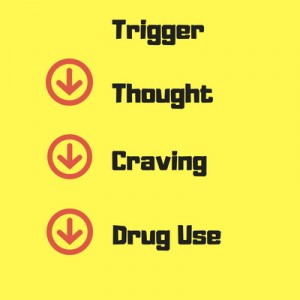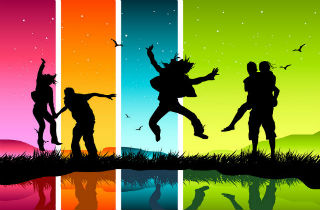ARTICLE OVERVIEW: This article reviews the dangers of people, places, and things. And while you CAN party in recovery, but you need to be conscious of your thinking patterns. To avoid relapse, identify and avoid your personal triggers.
ESTIMATED READING TIME: 5 minutes.
TABLE OF CONTENTS:
- Intro
- People, Places and Things
- So, Can I Party?
- How to Protect Your Sobriety
- Partying in Recovery
- How to Kill a Craving
- Your Questions
Intro
If drug use was the way you had fun in the past, it might be tricky to attend parties again when you are in recovery. In fact, we have to carefully consider our triggers – especially in early recovery – in order to avoid relapse. Why jeopardize the effort and progress you’ve put into a life of sobriety?
So, how can you party?
In this article we’ll review fun activities and social alternatives that do not involve drug use. Plus, we give you ideas about how to refuse drugs and what to say when someone offers you a drink or a drug. Finally, we invite your questions and/or personal experiences in the comments section at the end.
People, Places, and Things
A party can be a trigger for drug use. What’s a trigger, exactly? Triggers are anything that cause a craving. In recovery and in 12 Step meetings, we often hear this referred to as “people, places, and things.” The reality is that ANYTHING can be a trigger to our drug use. And triggers are 100% personal. A trigger can be:
- A Friday night
- Anxiety
- Boredom
- Fatigue
- Free time
- Loneliness
- Old friends
- Pay day
- Sexual arousal
- Stress
…and parties are the perfect spot to encounter multiple triggers. Why do parties trigger us to want to use? This SAMHSA Workbook for substance use defines the risk like this:

The brain associates triggers with using and your drug-of-choice. This is because, over time, drugs REINFORCE the pleasure centers in the brain. As a result of constant trigger- ing and using, one trigger can subconsciously equate your drug-of-choice as the solution to whatever is in front of you. Here’s a possible scenario.
I’m feeling lonely. Wait, that’s familiar. [Fill in the blank] makes me feel wonderful. Let me use just this once to feel better.
And with a trigger comes:
- Continual thoughts of the drug-of-choice
- Psychological dependence
- Strong physiological arousal
- Strong cravings
When the cycle feels overwhelming, we end up right back where we were again.
So,Can I Party?
Maybe!
Q: When should you refrain from partying?
A: If going to a party can trigger a craving, then you shouldn’t go.
By definition, triggers are external stimulus that act as flashbacks making a person re-live an event. They are highly personal. For this reason, everyone in recovery should have their own list of things, people and places increase risk of relapse.
Triggers are activated through one or more of the five senses: sight, sound, touch, smell and taste. If you are in early recovery and just started developing a sober lifestyle you should pay close attention to the following triggers:
- Environment where drug use took place (specific locations such as: house, a nightclub, bathrooms, etc.)
- Objects associated with drug abuse (piece of furniture, tables, mirrors, razors, etc.)
- Seeing someone else using
- Smells that are associated with previous drug use (smoke, perfumes, or lighter fluid)
- Sounds that remind you of drug use (certain songs, coughing, sighs, etc.)
- Tastes that might stimulate drug use ( foods, alcohol, tobacco… etc)
If you are in early recovery (in the first year or two) and recently started a sober lifestyle, it is recommended that you avoid parties. If you are in situations or places that might lead you to going back to your old behaviors… THEN you shouldn’t take risks.
How to Protect Yourself
Saying “NO” takes a little practice. In fact, every reputable addiction treatment program should teach both relapse prevention tips and refusal lines. Here are suggestions about what you can do/say at a party in different situations to refuse drugs.
1. Make sure you have accountability. First, attending sports, musical and other social events in the company of at least one other person who supports your recovery and will remind you of your goals every time a craving strikes.
2. Practice. Try out drug refusal lines out loud to yourself in front of a mirror or with a friend. Saying things such as: “I’m not using any more, because of health problems.” Or, “No, thanks. I’m the designated driver tonight.” Or, simply saying, “No.” takes practice. But, after several attempts and offers, people might just get the message and stop asking.
3. Make sure to make your home is a drug-free zone. Tell people who visit your house that drugs are not used in your home any more. This way, you’ll make a selection of friends and those who continue using will simply stop coming to your home. And, you can host your own parties!
Partying In Recovery
Sober communities are built upon the philosophy of having fun in many different ways that do not support drug use. If you think you can’t have fun while being sober, than check out these sober party tips.
Here is how you can party sober:
- Dance. There is no reason not to act in a party mode when you’re celebrting life!
- Drink mock tails – non alcoholic cocktails.
- Hang out with other sober people.
- Host a sober party yourself.
- Join activities that don’t involve alcohol/drugs (bowling, darts, card games,…)
- Practice an exit strategy.
- Talk to people at the party and connect.
To stop a craving, begin to control your thoughts. Allowing a thought to turn into a craving is making a decision to use.
How to Kill A Craving
Stopping the relapse process is an important part of treatment. In fact, most addiction counselors teach addressing triggers as a three step process.
STEP 1. Identify your own personal triggers.
STEP 2. Prevent exposure to triggers whenever possible.
STEP 3. Cope with triggers differently than in the past. For example, schedule new activities for Friday nights. Or, have a list of things to do when you’re bored.
But what if a craving pops up? At a party? Out of nowhere?
The only way to ensure that a thought won’t lead to a relapse is to stop the thought before it leads to craving. Stopping the thought when it first begins prevents it from building into an overpowering craving. It is important to do it as soon as you realize you are thinking about using.
According to SAMHSA, the best way to kill a craving when it arises is to do one of the following:
1. Visualization.
Imagine a scene in which you turn off a craving. For example, picture a switch or a lever in your mind. Imagine yourself actually moving it from ON to OFF to stop the thoughts. Have another picture ready to think about in place of those thoughts, such as the rewards of seeing your loved ones or a life milestone.
2. Rubberband snap.
Wear a rubberband loosely on your wrist. Each time you become aware that you’re thinking of your drug-of-choice, snap the rubberband and say, “No!” to the thoughts. Then, force yourself to think about another subject. Have a subject ready that is meaningful and interesting to you.
3. Relax.
Feelings of hollowness, heaviness, and cramping in the stomach are often caused by drug cravings. These can be relieved by breathing in deeply (filling lungs with air) and breathing out slowly. Do this three times. You should be able to feel the tightness leaving your body. Repeat this whenever the feeling returns.
4. Call someone,
Talking to another person provides an outlet for your feelings and allows you to hear your thinking process. Talk through a craving from now until its conclusion. Have phone numbers of supportive, available people with you always, so you can use them when you need them. And don’t limit yourself to just a few people. 10-20 phone numbers can be a life saver in times of acute need!
Your Questions
Do you still have questions about how to party without drugs? Please post your questions in the comments section below. We try to respond to all legitimate inquiries personally and promptly. In case we don’t know the answer to your question, we will gladly refer you to someone who can help.









Related Posts